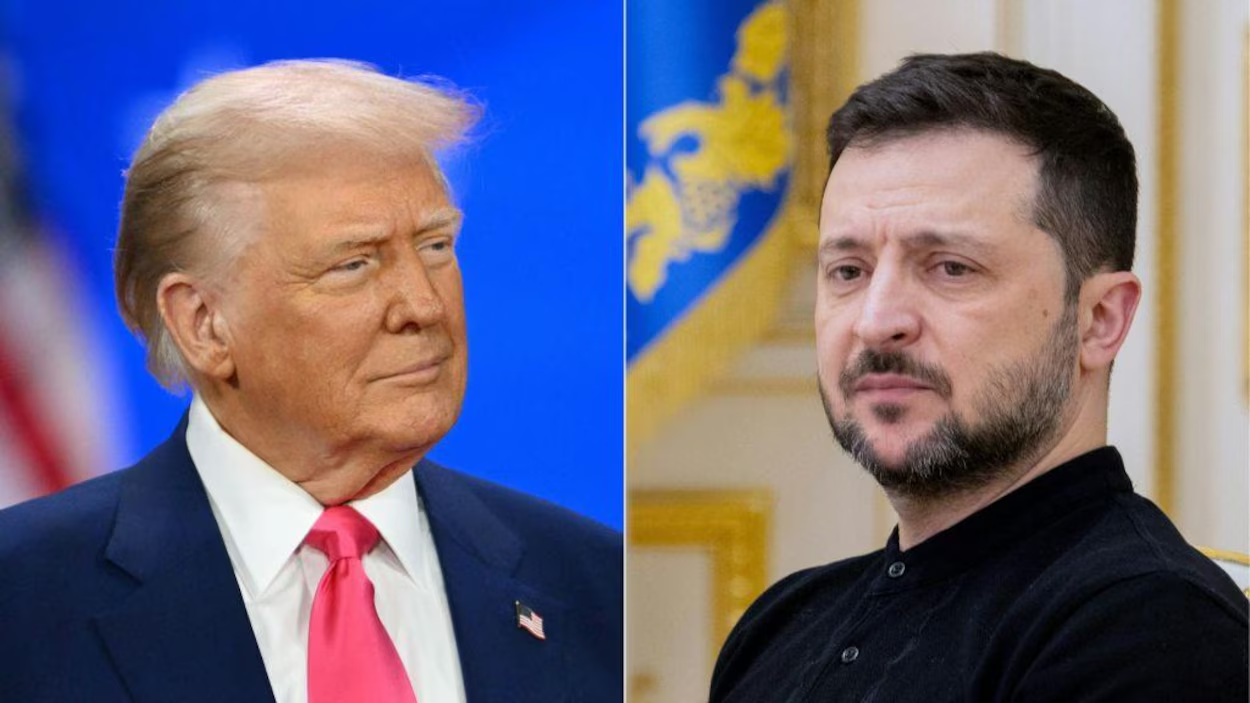
Three years after the Russian invasion of Ukraine, the future of the war remains unpredictable. Donald Trump’s election as the head of the world’s leading power has been reshaping alliances. Now, Ukraine’s security under the United States’s protection is uncertain.
It has been just over two months since Donald Trump returned to the White House, and there have already been significant changes in U.S. policy, especially with regard to Ukraine. The mobilization, support, and empathy seen under the Biden administration have been sharply contrasted by Trump’s threat of political abandonment. He has warned that he may end three years of continuous assistance to Kyiv and wants a ceasefire as soon as possible. “I think I have the power to end this war,” Trump said. However, there is no clear picture of how an eventual end to the war in Ukraine will play out, especially without the United States’ support.
Trump decided to engage in bilateral negotiations with Russia. A first round of talks was held in Riyadh on February 18, where Trump announced a new phase of ceasefire negotiations between American and Russian delegations for the Ukraine war. After the meeting, the U.S. Secretary of State explained that Russia and the U.S. had agreed to restore staffing at their respective embassies and to create a high-level team to support Ukraine peace talks. He said, however, that there is still work to be done.
As no Ukrainian officials were present, Ukraine’s president warned it would refuse any deal imposed without their consent. Former German Chancellor Olaf Scholz reiterated, “there must be no decision made over Ukraine’s head.” According to the European leaders, notably French President Emmanuel Macron, a truce in Ukraine is feasible, but it “must not be a surrender of Ukraine.” This truce must be sustainable and backed by security guarantees, which many European countries are willing to support. Macron clarified that they are eager “not to go to the front line, not to go in confrontation, but to be in some locations, being defined by the treaty, as a presence to maintain this peace and our collective credibility with the U.S. backup.” Trump responded that Putin would accept peacekeepers in Ukraine. Putin himself stated that Russia does not reject a peaceful solution to war. However, Putin reiterated his conditions for peace talks. He claimed that the annexation of occupied territories in Ukraine is non-negotiable. Ukraine rejected this claim, calling Russia’s remarks “laughable.” “Russia cannot claim any of the Ukrainian territories,” Ukrainian diplomat Guéorguii Tykhy replied.
Trump’s stance contrasts sharply with the previous U.S. position, which sought to exclude the Russian president and align more closely with European leaders. Trump brushed aside Ukraine’s concern about being kept out of the meeting in Riyadh by saying, “You’ve been there for three years. You should have ended it… You should have never started it. You could have made a deal.”
Trump even accused Zelensky of being a “dictator:” “We have a situation where we haven’t had elections in Ukraine, where we have martial law,” Trump said in Mar-a-Lago. He later added on his Truth Social platform: “A Dictator without Elections, Zelensky better move fast or he is not going to have a Country left.”
Nevertheless, experts note that holding elections in Ukraine before the war ends would be practically impossible, as Russian attacks on many cities persist and millions of citizens are displaced abroad or living under Russian occupation.
As an answer to the American president’s accusations, his Ukrainian counterpart said he was willing to give up his presidency in exchange for Ukraine’s NATO membership. “If you want to achieve peace, you really need me to give up my post – I’m ready. I can trade it for NATO membership if there are such conditions,” the Ukrainian president said in response to a question during a news conference. Trump then said Ukraine can ‘forget about’ joining NATO. Zelensky also warned that this disinformation originates from Russia, and some of Trump’s remarks echo Russia’s own narrative of the conflict.
There has been what Le Monde called a “Putinization of American politics”: the American president is promoting illiberal ideas and methods that are in line with those of Putin.
Beyond rhetoric, Trump’s stance is already shaping U.S. foreign policy, particularly in international diplomacy. This shift is evident in his administration’s actions at the United Nations. The change is already visible in his administration’s actions which are at the heart of the United Nations. Twice, they decided to side with Russia. European countries drafted a resolution condemning Moscow’s actions and supporting Ukraine’s territorial integrity, titled ‘Advancing a Comprehensive, Just and Lasting Peace in Ukraine.’ The United States, with 17 other countries, chose to vote against it. Then, they drafted their own resolution at the UN Security Council, calling for an end to the conflict but without criticizing Russia’s actions. This resolution passed, however, the UK and France abstained. They had tried to amend the resolution’s wording but had been vetoed.
Trump also took concrete actions after a tense meeting in the White House Oval Office on February 28. Zelensky had flown to the U.S. to sign a minerals agreement with the United States. Donald Trump and his vice president accused Zelensky of not being ‘thankful’ for U.S. support and of refusing to accept the proposed truce terms. Trump told him, “You don’t have the cards right now. You’re either going to make a deal, or we’re out.” He added, “If you’re out, you’ll fight it out, and I don’t think it’s going to be pretty.” After these threats, the Ukrainian president returned to his country without signing any deal. Consequently, Trump decided to halt American military aid and intelligence sharing with Ukraine.
These moves from those who were strong allies of the U.S. under Biden’s administration clearly show a growing divide, as well as the shift of Washington’s policy on Ukraine. U.S. Deputy Ambassador Dorothy Shea explained this change by pointing to the inefficiency of the previous UN resolutions, which called for Russia to withdraw its troops: they have “failed to stop the war.” For her, this war that has “dragged on for far too long” is harmful to both Russia and Ukraine, and thus, they need “a resolution marking the commitment from all UN member states to bring a durable end to the war,” she said before the vote. It will be, according to Shea, “the first step that ‘puts us on the path to peace.’ ”
The shift in U.S. policy could pave the way for peace, but at what cost? In just one month, the dynamics of global alliances have changed drastically, leaving Ukraine with diminished support from America despite backing from European nations. As the international community navigates this uncertain terrain, the prospect of a ceasefire negotiated without Ukraine’s involvement raises critical concerns about the country’s sovereignty and long-term security, as well as for the rest of Europe.
Other posts that may interest you:
Discover more from The Sundial Press
Subscribe to get the latest posts sent to your email.





